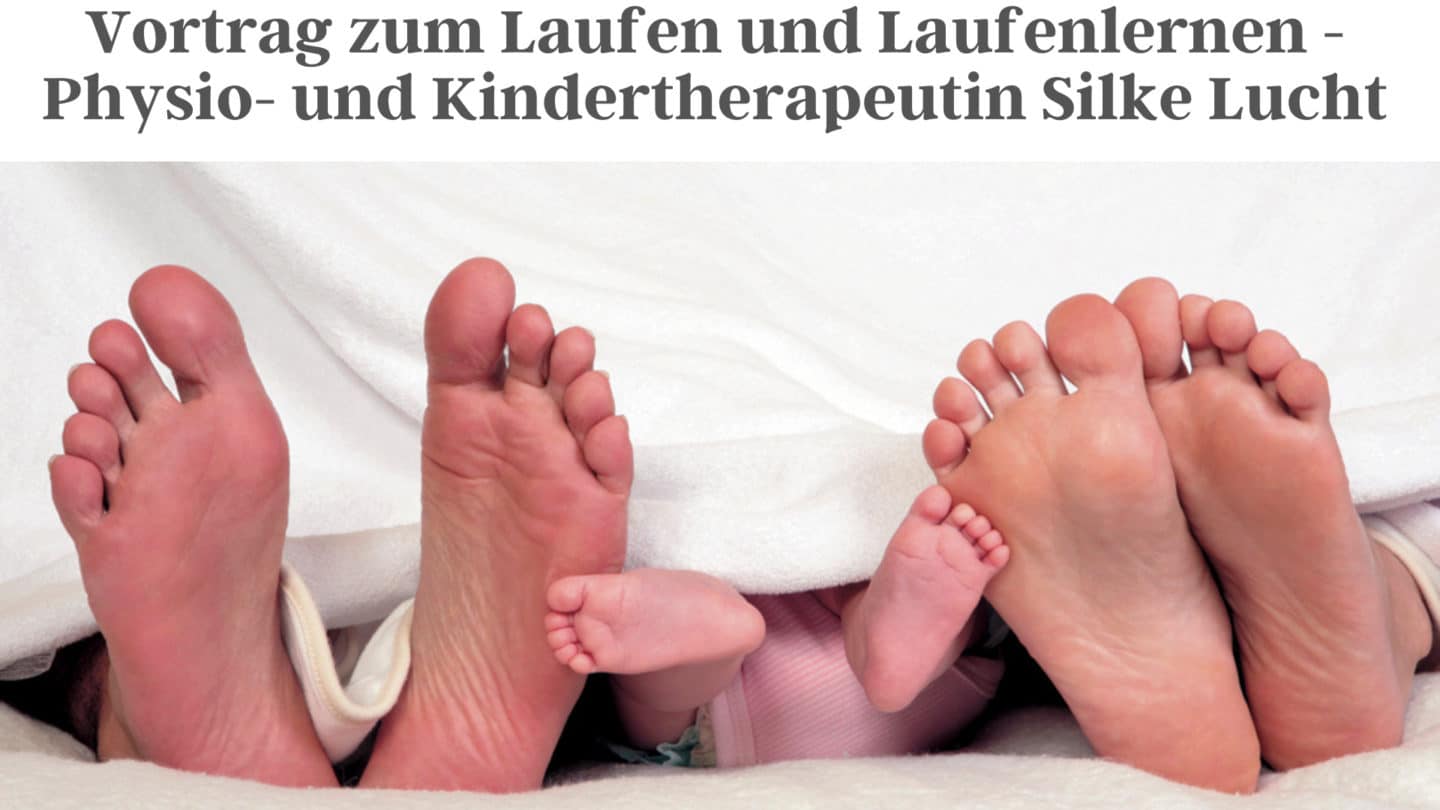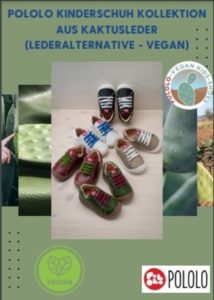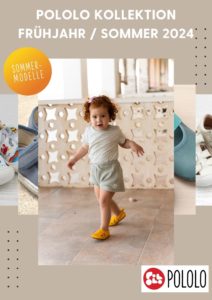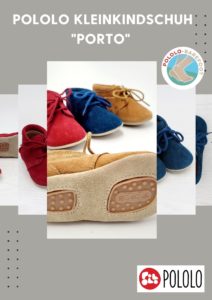
Specialist dealer lecture evening in the POLOLO ShowRoom for learning to walk
In June 2019 we had our lecture evening “Child Foot Development” with the Physio and child therapist Silke Lucht with us in the POLOLO ShowRoom. We would like to thank everyone who attended – it was an interesting and enjoyable evening – and we look forward to further gatherings. If you are interested in further lectures with us, please get in touch. For everyone who couldn't attend, here's our summary:
Allowing yourself to be small: giving babies and toddlers time!
Especially in today's hectic, fast-paced and pressured times, we should all make sure that babies and small children have enough Freiraume still to give “to be small” to be allowed.
Motor and sensory development is important for healthy early childhood development before crawling and learning to walk Experiences initially on the ground close. Because one's own body must be explored extensively and the environment must be felt intensively in order to create an image of oneself and the world in the brain:
For example, healthy children like to examine their little feet - they put them in their mouths to feel them and at the same time train their muscles through the associated stretching and stretching movements. They also rub the soles of their feet together to rub them together natural body feeling to express.
Fall down and always get back up!
Some adults can't wait to see their offspring walking as early as possible - and would like to give help to support them. However, it is better for the little ones, the sensorimotor ones Development “without gaps” experience because that's the exciting thing about growing up!
Every single step in learning, including effort and mistakes, needs to be experienced for yourself. We adults shouldn't necessarily stop unsuccessful attempts - we should rather keep our little ones away encourage you to try again. at “Milestones” early childhood development must first “collected” so that a small child receives a solid foundation for further growth.
An important intermediate step is pulling yourself up, for example on the edges of a table, with your first side steps. Falling, slipping and then getting up again – this is also part of the learning process. Therefore, shoes should not be too non-slip or even have a sole that is too firm. Because that's irritating. This would also result in incorrect information being passed on to the brain. You have to learn that you can also do this on smooth or sloping subfloors to slip can. That's part of growing up!
Walking barefoot is important!
In order to avoid misalignments caused by shoes that are too tight or too wide, under-stressing and atrophy or incorrect strain on the muscles and connective tissue, but also the isolation of the senses from the environment, it is beneficial to care for the little ones as often as possible Walk barefoot or in soft leather shoes to leave.
Street shoes only have two functions for healthy feet: Protection against injury and prevention of hypothermia. Sensing changing surfaces (e.g. grass, sand, gravel, bark, but also laminate, tiles, carpet, etc.) on the paths outside and inside is immensely important for self-perception and interaction with the environment.
The recommendation to go barefoot as often as possible also applies to adults. They too should have theirs Pay more attention to feet – care for and train them regularly to do something good for their overall health!
Work through challenges yourself – the journey is the goal!
Parents should look at their little ones' exploration of the world from their perspective - the following applies: "The route is the goal!" Leisure and patience are required, as well as the willingness, for example, not to rely on a specific destination or exact time when going on an excursion.
Silke Lucht pointed out that small children can also do so quietly Alternate means of transportation should, because using only balance bikes, for example, is wonderful for balance, but long-term use could lead to one-sided strain on the forefeet. “Why not get out the good old tricycle again?” In this case, reciprocal pedaling and simultaneous steering are very beneficial for child development.
Patience is also required when playing and trying things out: children should not be put on the slide, for example, but should first work out the height themselves - supervised by adult companions, of course - in order to be able to Develop a sense of distance and danger to be able to.
Parents demand: Conservative treatment options for misaligned feet
Lucht showed the transverse and longitudinal arches of the foot, which still have to develop, as children up to the age of three still have a fat pad there. The vaults have a springy effect protective function for the spine upright walking people, which is why undesirable developments should definitely be remedied.
Using the foot bone models she brought with her, she explained various things Foot deformities, for example the so-called kink, club and sickle feet, and emphasized the advantage of correction without surgery with the active involvement of the parents, who would have to take a lot of time for this: They are then intensively challenged to regularly go to physiotherapy with their child Practice and train several times a day at home.
Another maldevelopment of the feet that is now becoming more widespread in children is: Hallux valgus – a deformation of the metatarsophalangeal joint of the big toe. The base of the big toe deviates outwards and the tilting of the tip of the big toe inwards puts pressure on the other toes. According to Lucht, a major cause of this misalignment of the toes is shoes that are too tight.
Recommendations for parents and shoe sellers
Parents certainly wanted the best for their little ones - but "well-meaning" is not necessarily also "well done". Over-cautious and over-ambitious parents could jeopardize the healthy development of a baby disrupt rather than encourage. A healthy small child needs enough time and freedom to play and try things out so that when he or she transitions from kindergarten to elementary school, he or she can fluently carry out age-appropriate movement patterns such as running backwards, hopping on only one leg, jumping jacks, etc.
If a shoe saleswoman notices a possible misalignment during the consultation, she should not make a diagnosis herself - but should definitely recommend to the parents physiotherapeutic advice to catch up.
A tip for buying children's shoes: To determine the actual size required, the children can be placed upright on a piece of cardboard to create a template and the contours of both feet can be traced vertically with a pen - an extra thumb's width should be taken into account for the length the feet can roll around in a relaxed manner (measurement is best done in the afternoon, as foot size fluctuates throughout the day). Shoes that are too small lead to an impediment to rolling, shoes that are too big lead to unergonomic cramping and “clawing”. Therefore, shoes should never be “in stock”, but rather only fitting to be bought.
The “ideal shoe”…
On their wishes for you “ideal shoe” In more detail, Lucht emphasized again that shoes are only for healthy people “protect, not support” should. As "ideal" She referred to shoes that relate to all axes soft and malleable so that all foot muscles are regularly challenged.
especially the Sole should be soft. For healthy children, it would be counterproductive to use an orthopedic sole or a pre-shaped footbed - heels should also be avoided for the sake of their health.
On the professional background of the speakers: Silke Lucht completed her training as a state-approved physiotherapist in Berlin in 1992, then gained experience at the Großhadern Clinic in Munich and then worked there as a physiotherapist until 2001 - most recently as head of the interdisciplinary surgical team. She has been self-employed in her business since 2002 own practice based in Berlin-Lichterfelde.
Photo: Very close to the feeling of running barefoot with the new POLOLO barefoot “ballerinas”.




